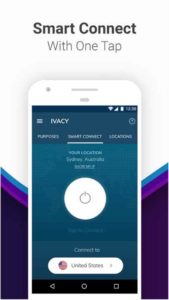Why Your Cybersecurity Should Be Layered
A layered cybersecurity plan involves the use of levels of protection to reduce risk and protect important data and systems. One layer of defense is supported by another, so if one link fails, you have others to mitigate the damage or stop the attack altogether.
In an increasingly technology-dependent world, a layered approach is essential to protecting your business.
Why Do You Need Layered Cybersecurity?
According to the FBI 2021 Report, Internet crimes are up 69.4%, with reported losses of $4.2 billion. These losses come in the form of actual money, lost productivity, locked customer data, regulatory fines, damaged reputations, and more.
Criminals have many methods they can use to cause this kind of disruption:
- Phishing scams – These can take many forms. They may send bulk emails to employees, hoping just one person falls for it and they’re in. Or they may target a single employee who holds the purse strings with an email appearing to be from their boss.
- Business Email Compromise (BEC) – They access an executive’s email and send instructions to employees or clients to forward the money to a different location.
- Ransomware – They encrypt your important files and require a ransom to unlock the files.
- Malicious code in apps and extensions – With this code, they can wreak havoc, setting up auto payments through payment processors, tracking your activity, or using your systems to target others.
- Website downloads – They can also get code on your computer this way.
- Nefarious employee activity – There have even been instances where criminals paid employees to use their access to make changes to a companies’ systems that enrich the criminals.
The best way to protect your systems would be to unhook yourself from the Internet. But in modern business, that’s not an option. That’s even more true now that we have so many employees working remotely.
So these are risks we have to learn to manage. But with so many ways a criminal can access and manipulate your systems, you need layered cybersecurity.
What Does a Layered Cybersecurity System Look Like?
A layered cybersecurity plan doesn’t rely on one method of protection. It recognizes that any protection can fail. You can have antivirus software, but criminals will find ways to exploit it.
A layered system starts with an antivirus because that’s a critical component. But it doesn’t end there. It may also include:
Endpoint Security
An endpoint is any device that can access your system: laptops, phones, the Internet of Things, etc. You need to know what devices are accessing, what they’re doing, and have systems in place to verify who is accessing.
Backup and Disaster Recovery
If someone were to hold your data for ransom, it’s less impactful if you can just remove the malware and restore the data from a backup. You need a contingency plan to get your systems restored and people back to work, ideally without missing a beat.
Excellent Spam Filters
Reduce the chances that employees see emails that are malicious. Spam filters today use machine learning across not just your business but the millions of businesses using the same email platform.
This allows them to spot potential threats and route them to spam or junk files. This isn’t to say every email that goes to junk is malicious. These filters also send emails that you rarely open here.
But any email that does go to junk should be looked at closely if your employee is considering restoring it to the inbox. It’s unlikely the spam filter would ever send something from an important person here, so chances are, even if it looks like it’s from that person, it isn’t.
Multi-Step Authentication
A password is no longer a secure gateway to sensitive systems. Multi-step requires a person to verify their identity through two or more methods, such as a code sent via text.
Tiered and Partitioned Access
Customer service shouldn’t be able to access files from accounting or vice versa. Front-line employees don’t need access to management-level documents. Setting up a system of controlled access can control a breach, limiting it to a section versus impacting everything.
Real-time Monitoring
Real-time monitoring that uses machine learning to learn what’s normal and how to identify irregularities can help you spot a problem sooner so you can eliminate the threat and repair the damage.
An Investment in Training
Your employees are the front lines of your cybersecurity defense. Train them to spot potential threats and think twice before taking instructions that seem out of the ordinary. Set up a system to inform management and IT of possible threats.
Together, we can prevent these damaging attacks. Create a layered cyber defense and protect your company from criminals seeking to enrich themselves by exploiting your weakest links.





